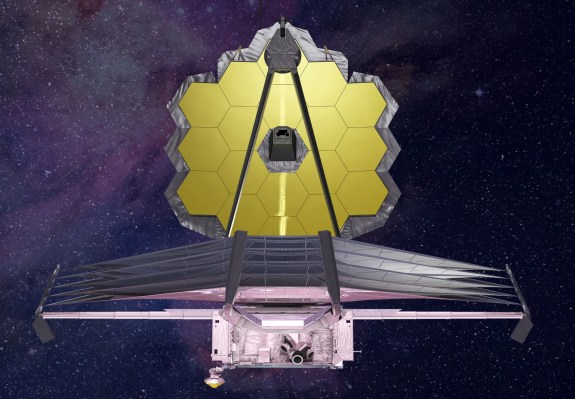The James Webb space telescope is certainly one of the most anticipated projects coming out of NASA, both because of its grand scale and its interminable gestation time. Well, the latter just got a little longer: The launch of the Webb, expected previously in mid-2019 (and before that in October 2018), has been delayed to at least May of 2020.
NASA acting administrator Robert Lightfoot and others from the organization announced the news in a conference call.
“All the observatory’s flight hardware is now complete,” Lightfoot said. “However, the issues brought to light with the spacecraft element are prompting us to take the necessary steps to refocus our efforts on the completion of this ambitious and complex observatory.”
The Webb is essentially the successor to the Hubble, which has done yeoman duty and by far exceeded its mission parameters — but all the same is coming to the end of its time. Conceived more than 20 years ago, it has faced repeated delays, as any project of this scale can expect to.
The $8 billion telescope will be the best eye in the sky and the most in demand, but once it goes up, it can’t be serviced or visited. That means everything in one of the most complex imaging devices ever created must work perfectly in outer space for decades, with no chance of physical intervention. So you can understand when its creators say they’d like to take a few extra months to quadruple-check some things.
Various small issues have arisen during testing and a Government Accountability Office report, like a cabling mishap that created a tear in the immense folding sun shield. “Those are avoidable errors, but in developing very complex systems, those things do happen.”
If you read between the lines, though, it seems that primary partner Northrup Grumman is getting the stink eye here; the company seems to have contributed more than its fair share of mistakes.
A consequence of the delays and new tests is that the project will now likely go over its $8 billion pre-launch budget cap and will need to be re-authorized by Congress. Considering the ballooning budget on something like the California high speed rail project, the Webb seems like an example of extreme fiduciary responsibility, and Congress knows to haggle, delay further or cut corners will merely cost it more in the long run.
